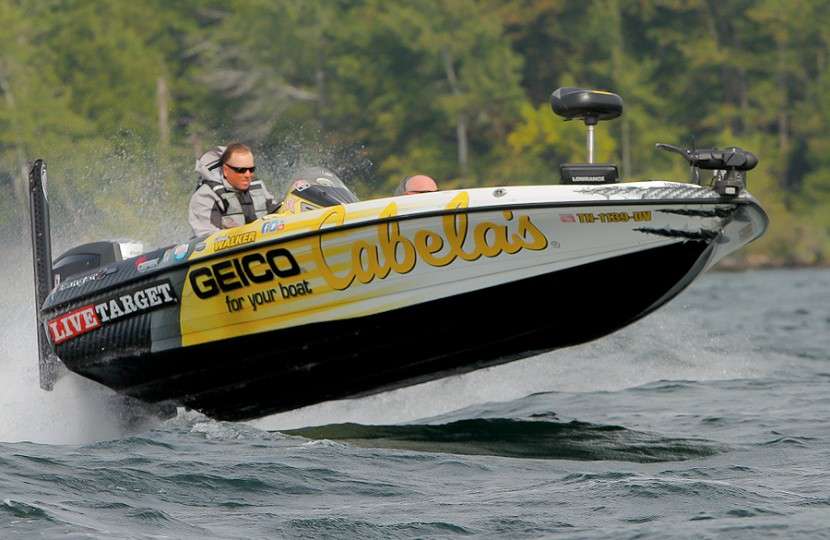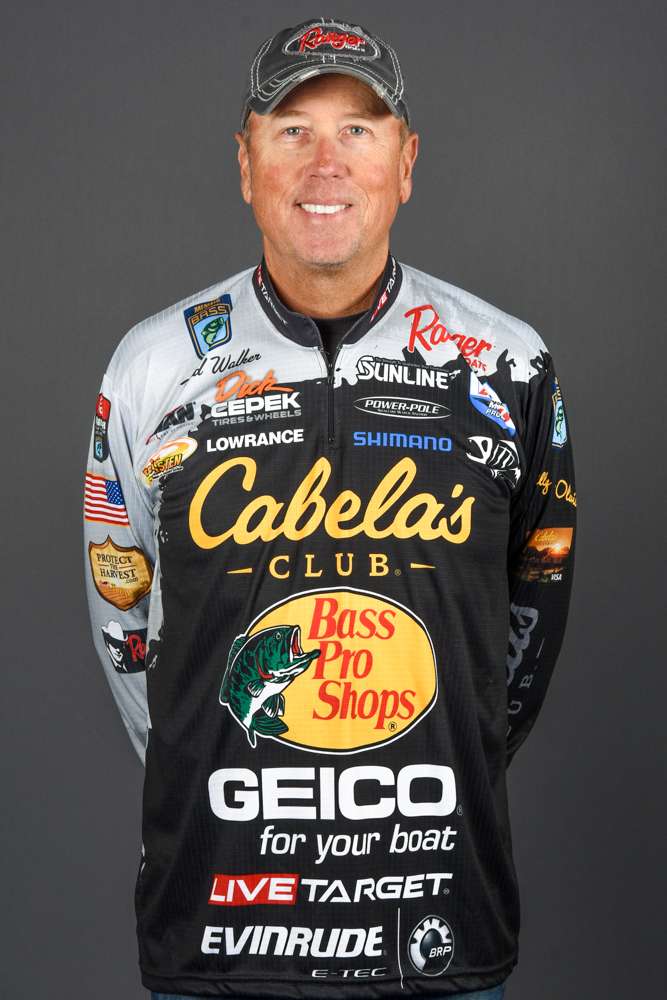
At the dawn of the Toyota Bassmaster Angler of the Year (AOY) Championship on Sturgeon Bay, I had a rather odd decision to make: take a big risk and run a long way in the big water or play it safe, stay close and catch a few fish to make the Classic.
In most Great Lakes tournaments, there is not such a choice. When there is a paycheck on the line, you have to go into the big water to make money, especially big money. But with the AOY Championship there is no tournament payout. On the line are a Bassmaster Classic berth and a chance to move up in the AOY standings for AOY money. As it turns out, I was in 25th place going into the AOY Championship. All I needed was a few fish to keep my Classic berth and a few fish could be had within a few miles of the ramp. The obvious choice here was to stay close. No stress. Don’t tear anything up. Catch a few fish. Lock up the Classic. Done.
And initially that’s what I intended to do. During practice I had trailered around to some far off places like Sister Bay and done well, but why go? There is really nothing to gain other than a butt whooping delivered by 25 miles of riding open water on Green Bay.
So as I sat there waiting for my boat number to be called on Day 1, my decision had been made: play it safe, stay close. As the takeoff proceeded, I watched other competitors idle past the off-limits point, drop their trolling motors and start fishing – just like I had planned to do. And all of a sudden it seemed like such a “mail-it-in” kind of move. For the next few minutes I let my mind wander away from my plan: Is that what I came here to do? Mail it in? Stare at the same “safe” bank for several days catching a few 2-pounders? Where is the adventure and competitive spirit in that? Come on man, you got to at least try!
By the time my boat number was called, the playing-it-safe plan was out. I dialed Sister Bay up on my Lowrance, and I decided to run the big water in Green Bay to at least try.
Now, I’m not going to go so far as to call myself dumb, but I will say this was not the smartest move in the world. I was basically putting my Classic berth at risk. One bad move in the waves could rip everything off my boat and render me useless in terms of fishing. But at the same time, there is something in me that relishes the challenge of big water – it tests your fortitude like nothing else in pro fishing.
In my early years as a pro, I was terrified of big water. I’ve taken hits from big waves that completely swamped me. I’ve had electronics and trolling motors stripped right off the boat. But over the years, I’ve learned how to run the Great Lakes in the wind and it boils down to running smart and taking it one wave at a time.
When big wind and water mix, you have to work with what the conditions give you – you can’t force it. Running a straight line to a point 25 miles away is no longer a reality. You have to be crafty in tacking waves and seeking out calmer water. These days I enjoy that challenge of playing the water and using what I can to my advantage.
Each day at Sturgeon Bay I went far out of my way to avoid rough water, but I made it back in one piece with no damage. If you were to look at my GPS track, it looks like a drunk monkey was piloting my boat – zig zags to run troughs and tack waves correctly, running far into bays to gain protection, heading farther out offshore so I could get in behind islands. Here’s the deal: getting to the spot fast does you absolutely no good if you’ve torn everything off your boat getting there. Preservation of equipment is the name of the game and if it means going out of your way 10 miles to go 25 miles, then so be it.
In the roughest, meanest stretches the key is to stay focused on each wave – one wave at time. I’m not thinking about what lure I’m going to throw when I get to my spot or trying to scroll my Lowrance out to see how much farther it is. The only thing I’m fully focused on is the next wave in front of me. And you can never get complacent. Waves almost have personalities: They will be consistent for a bit, then suddenly two or three in a row will be far bigger and meaner than the rest. Get impatient, push it just a little too hard and you will pay the price.
Being swamped by a big wave is horrifying. When you’re suddenly sitting in knee-deep water and choking on water, it feels like the ship is going down. Don’t panic. Today’s bass boats, outboards and equipment are pretty amazing at what they can withstand. Twenty years ago such equipment was not as resilient. With that said, please understand that I take numerous extra precautions in prepping my equipment, starting with an extra high-capacity bilge pump installed in my Ranger at the factory. Having two bilge pumps running is mandatory to shed high volumes of water quickly to “right the ship.” I go to a four-blade prop on my G2 for better bow lift at low speeds. Also, we are talking summertime here. When dealing with big waves in cold water temperatures that can cause immediate hypothermia – that’s a whole different ball game and one that I am much more wary of.
Each day at Sturgeon Bay got rougher, but the reward was the fishing got better. On the final day, when I checked in safely with a 20-pound, 10-ounce limit to finish second in the event, I had an overwhelming sense of satisfaction and accomplishment I would have never gotten from fishing close.
Did I make any more money in the tournament? Nope.
Did I move up any in the AOY standings? Barely.
Could I have caught that same weight closer? Maybe.
But then again, I never would have had that feeling of conquering the big water for three days and growing as an angler – one wave at a time.

